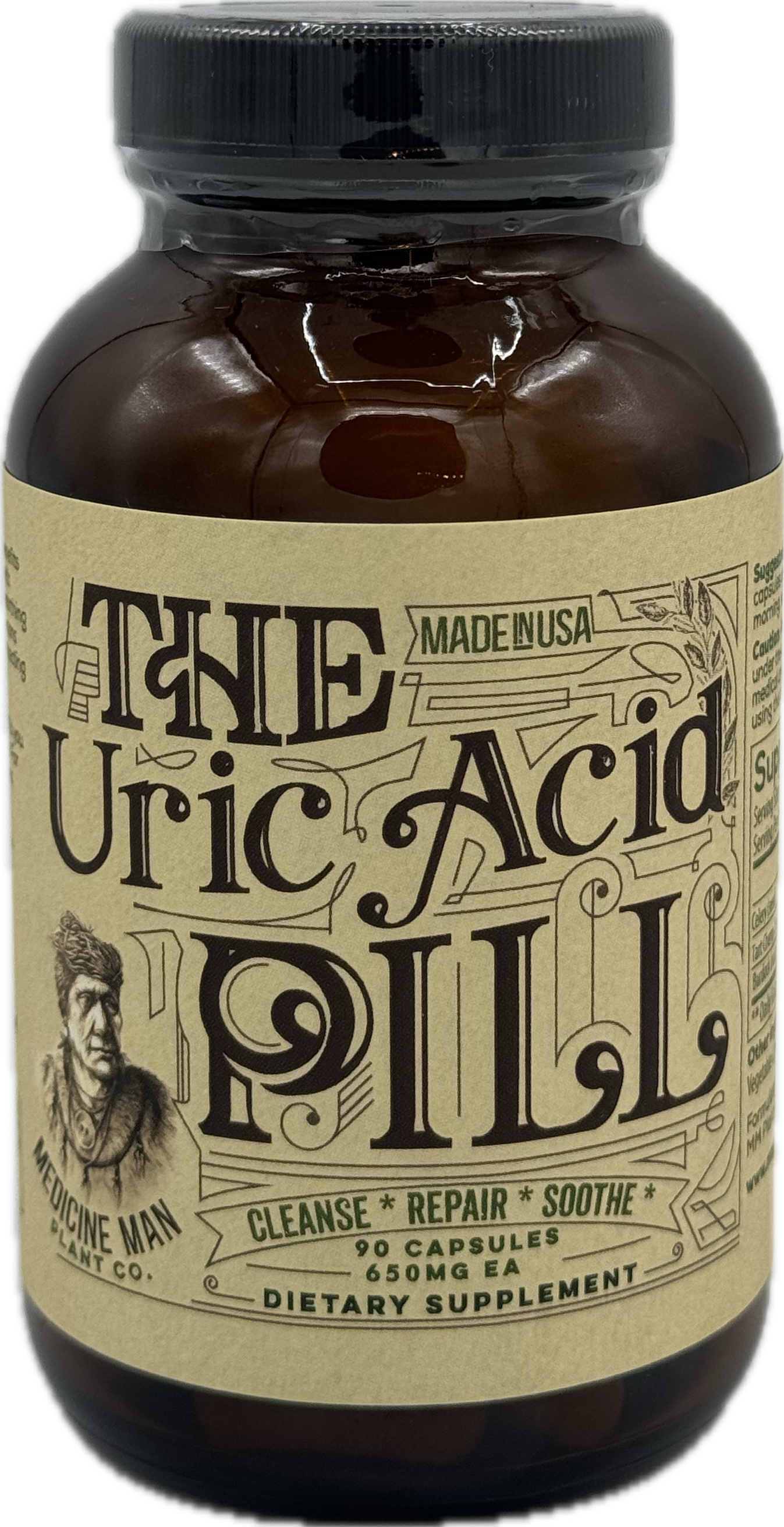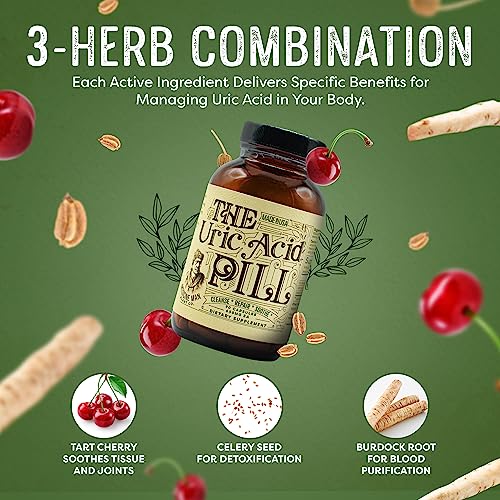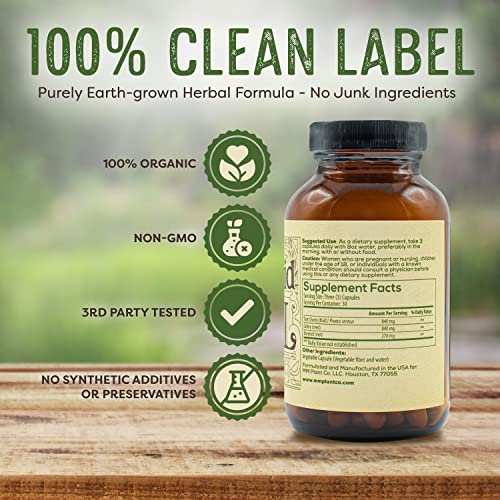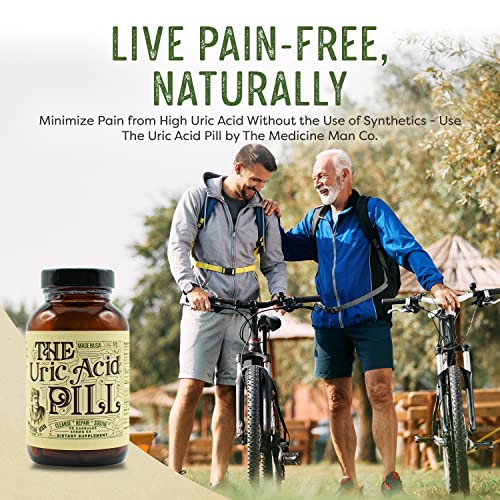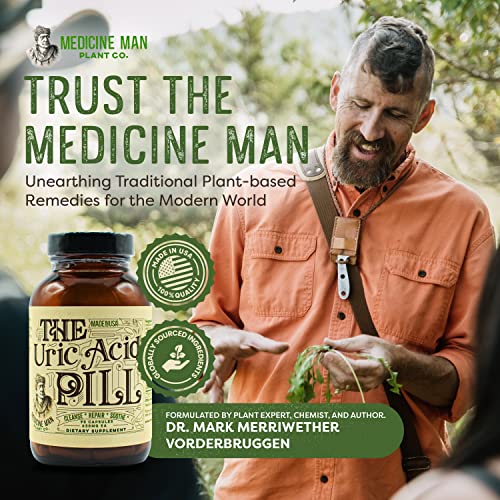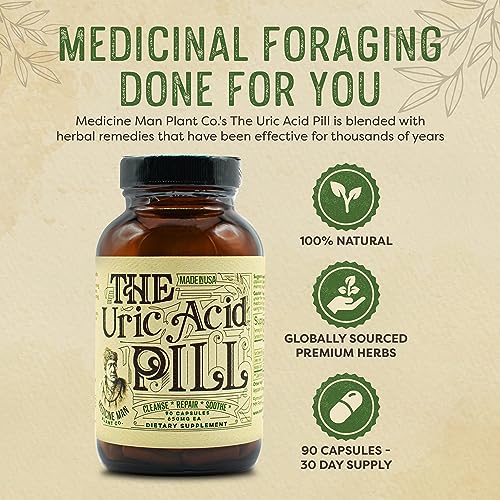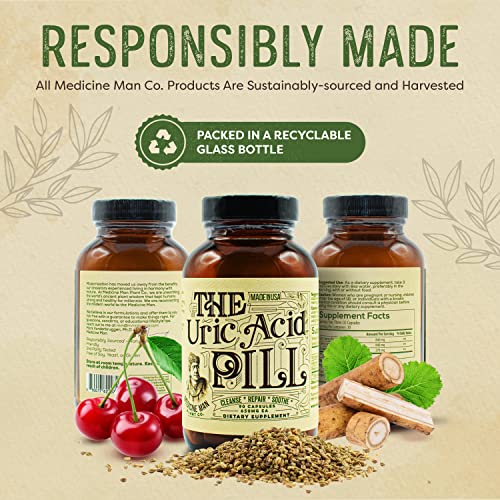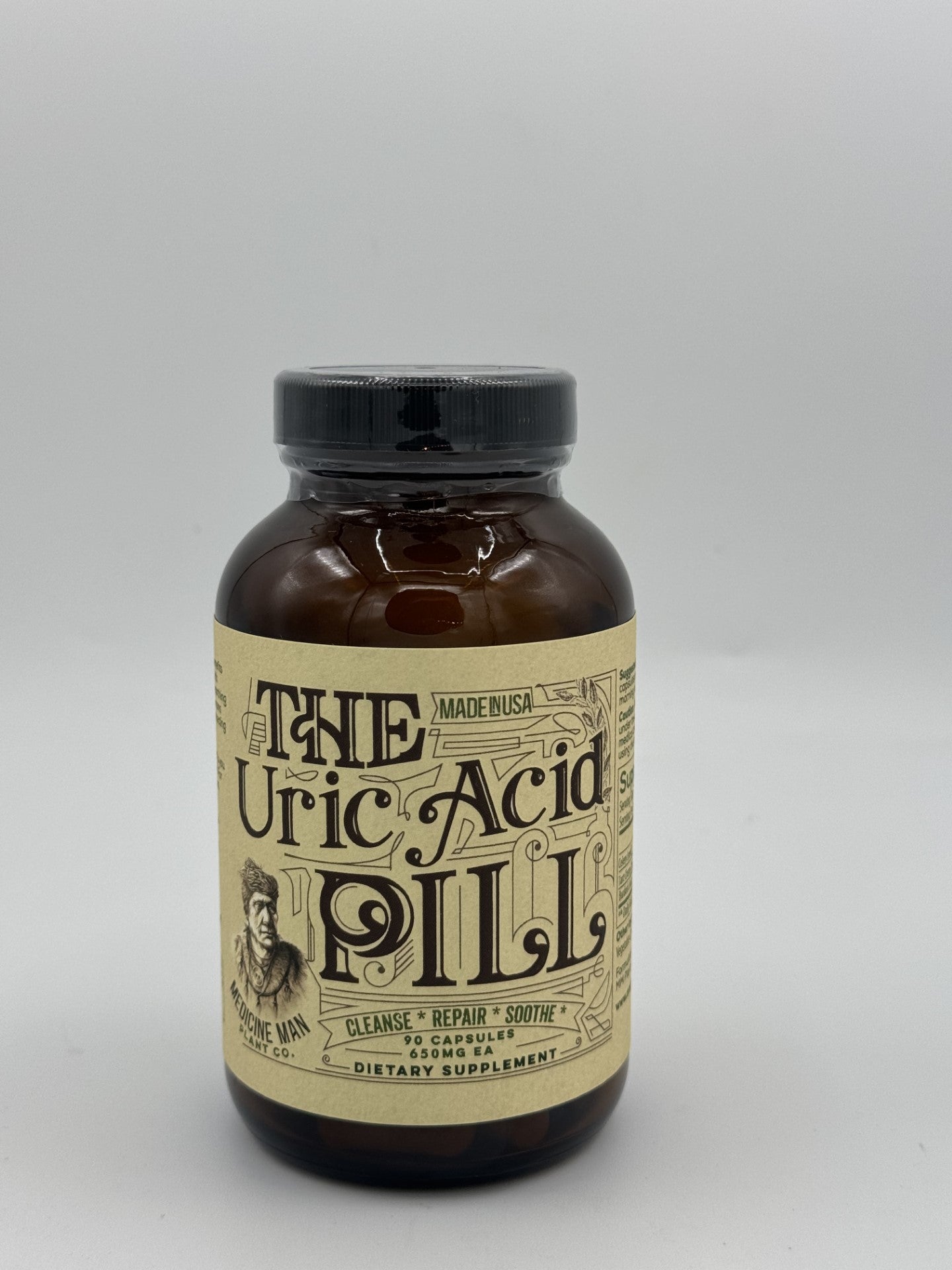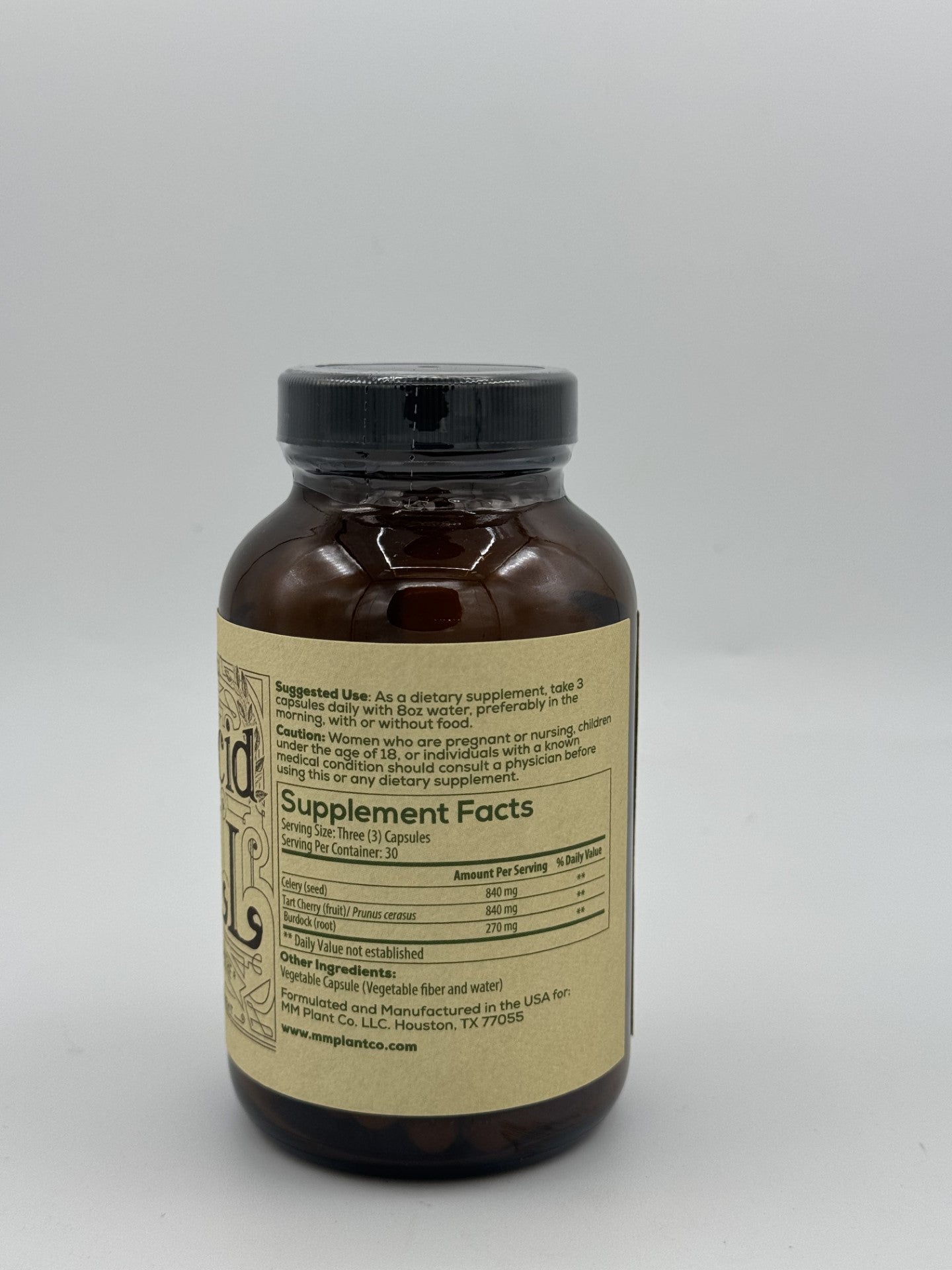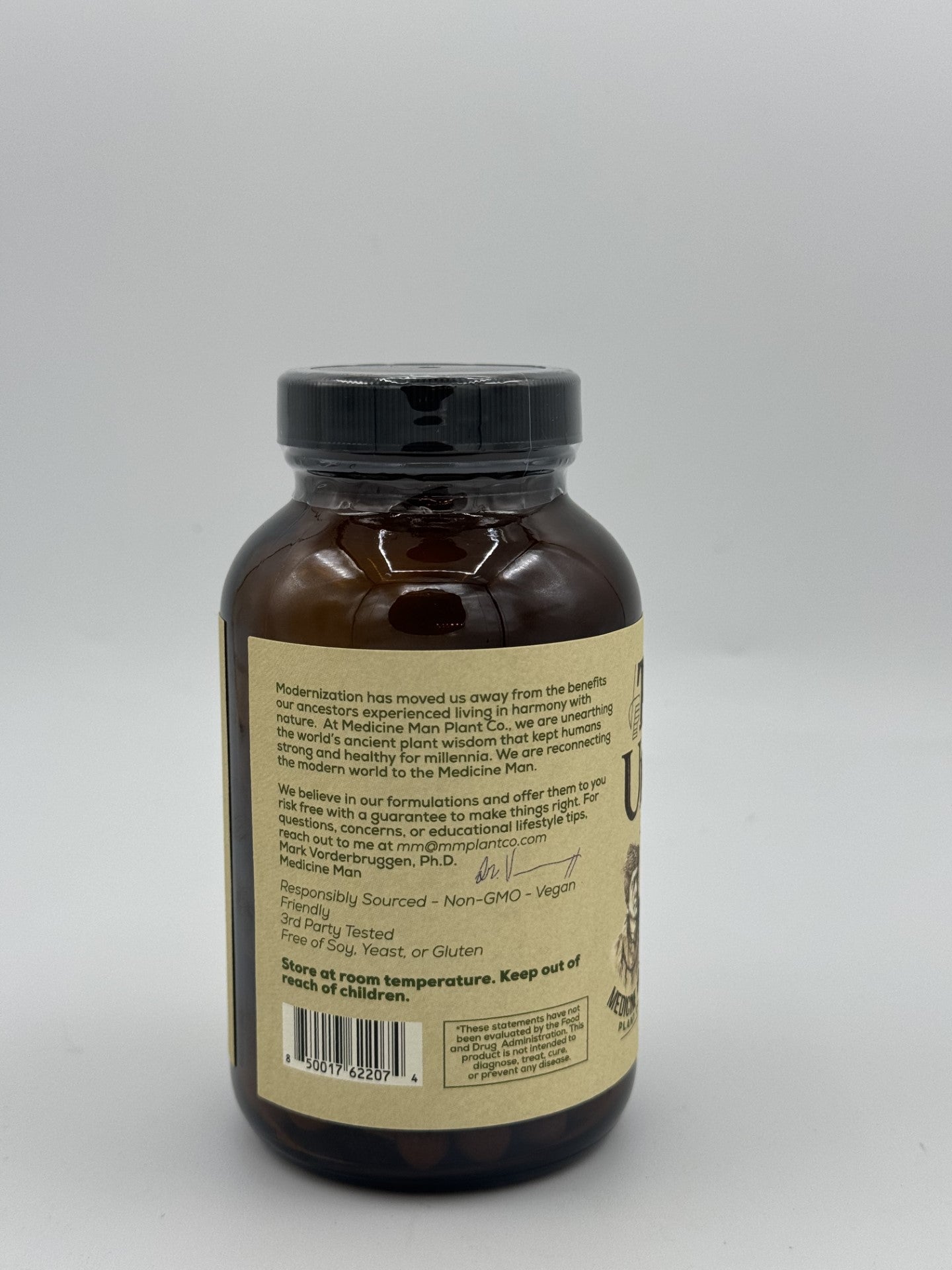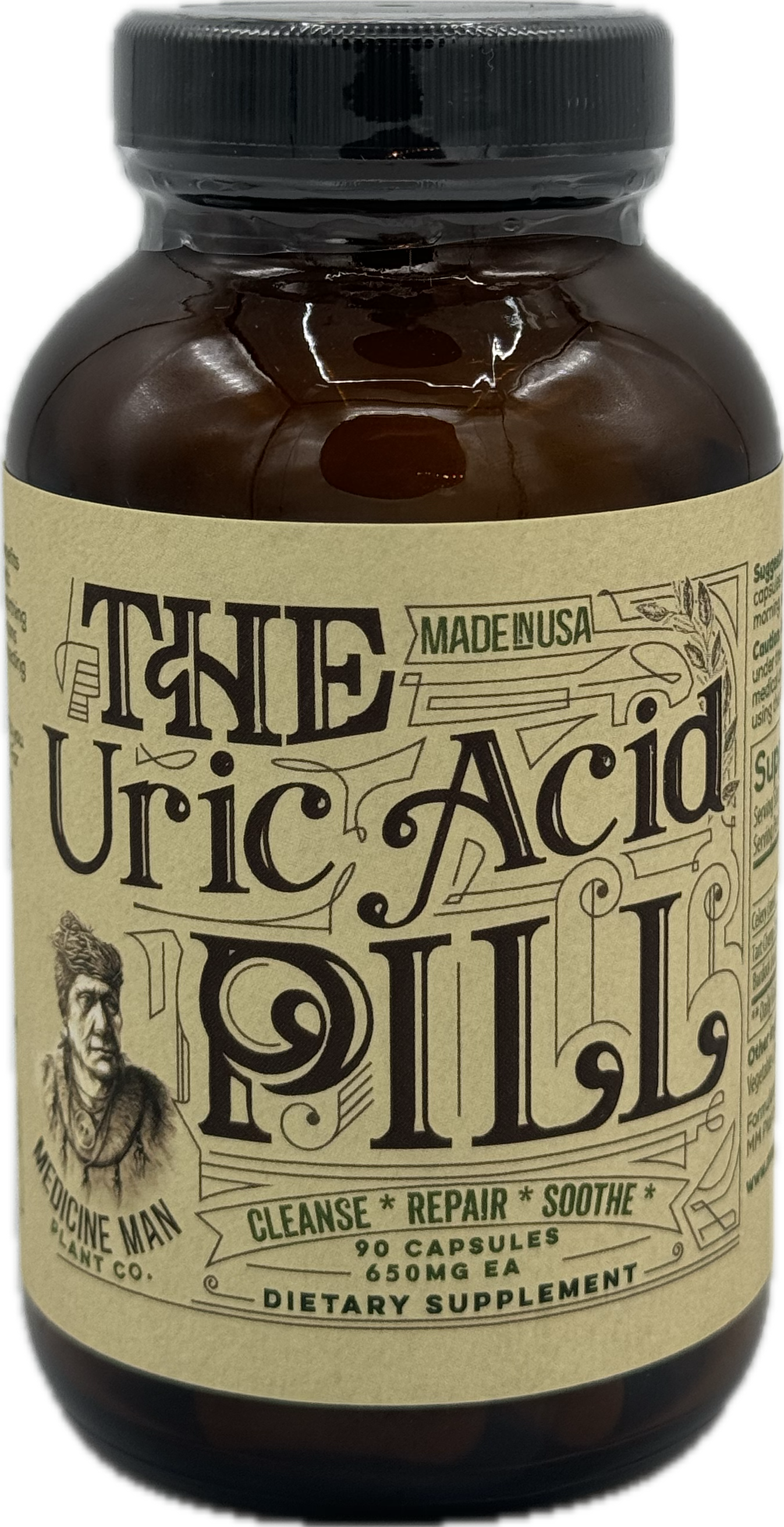

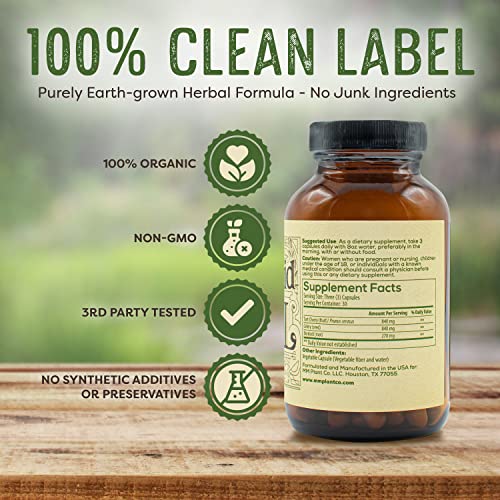

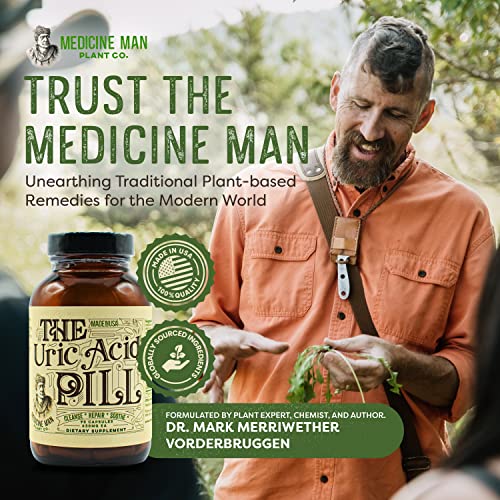

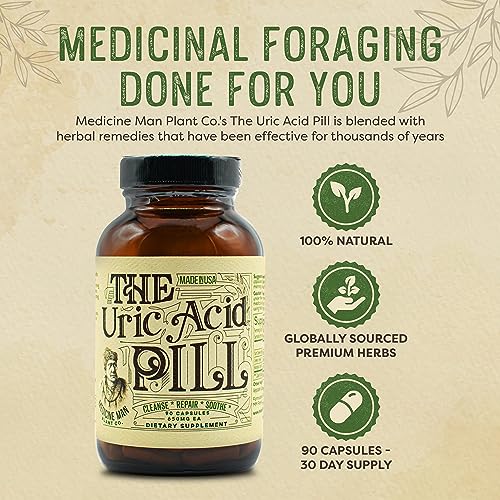
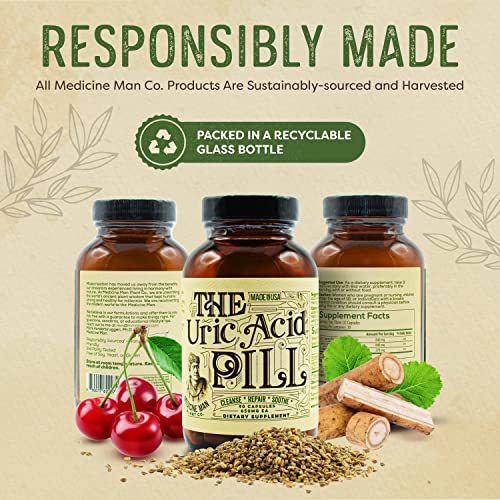
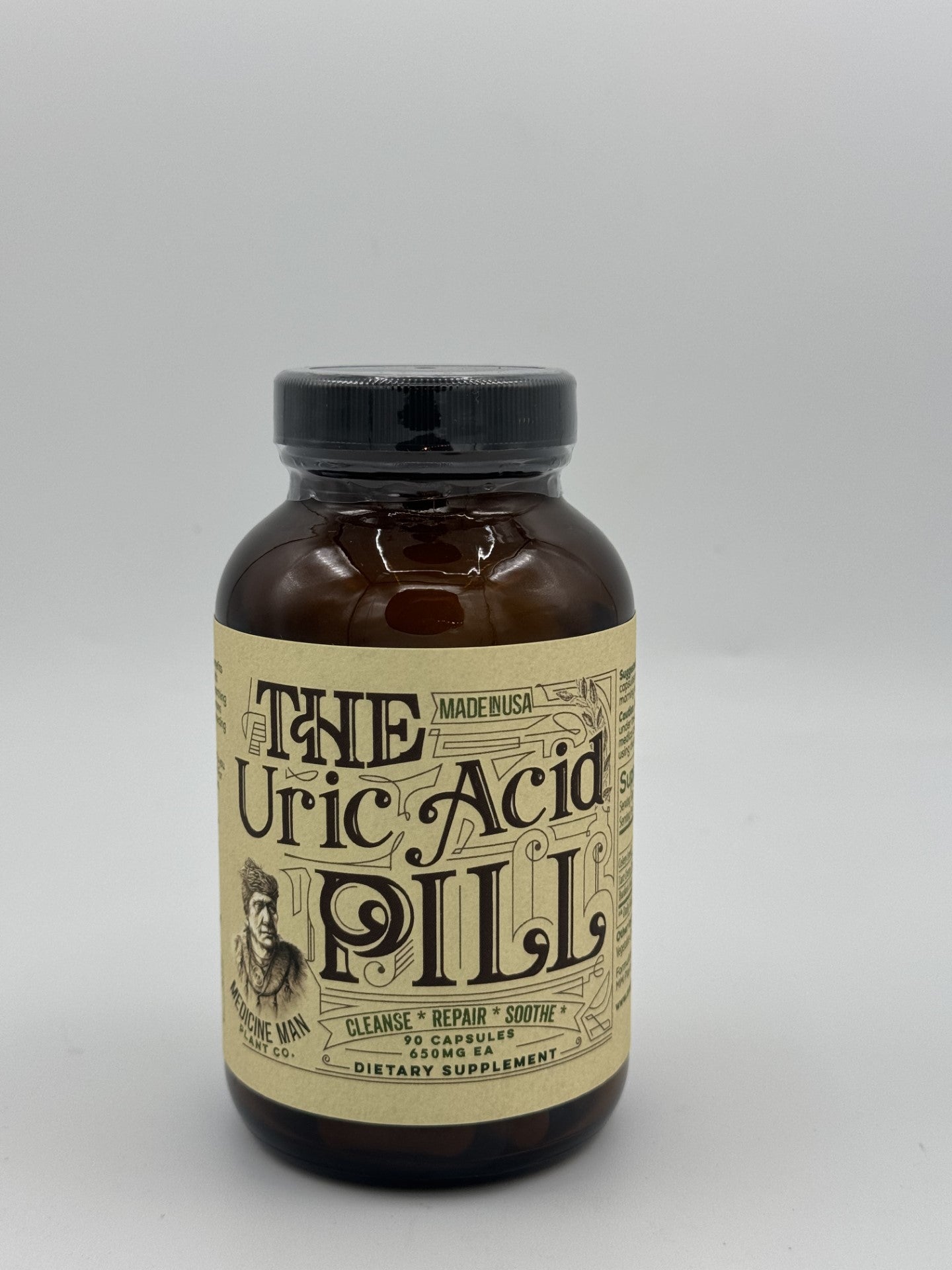
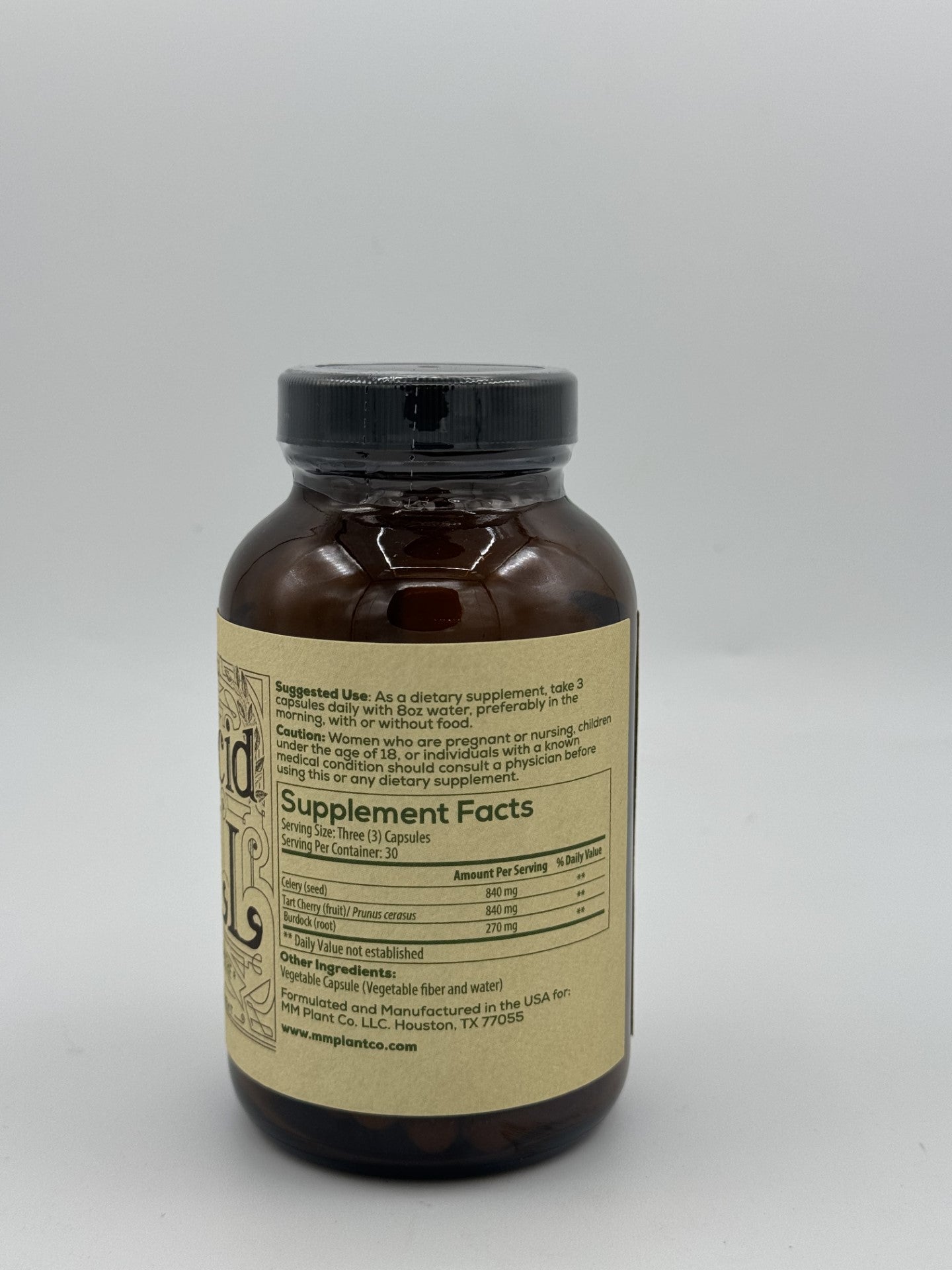

-
Product Ingredients - Benefit
Is the The Uric Acid Pill Right for You
Dosing
The Science
Trusted Quality
Precautions
-
Where do you make your products and source your herbs from?
We source ingredients from around the globe but seek out small farms and local as much as possible to help reduce the cost and waste of supply chain. We third party test all ingredients for pesticides, and heavy metals making sure it’s only the good stuff in our products.We make all our products in Texas with various manufacturing partners depending on the product.
We use Master Blends in Spring Texas for our capsule products, we use Uncommon Bee Farm in Jasper Texas for our honey products, and we use Lost Pines Yaupon for our tea products.
Are your supplements compatible for simultaneous use?
At MMPCo, we've crafted our supplements to complement one another and can be used alongside other supplements. Please review the precautions outlined for each product when considering combinations. We prioritize safety and have minimal concerns regarding excessive intake or nutrient overload.
Recognizing the individuality of each person, we advocate for experimentation to determine the optimal dosage that aligns with their distinct physiology.
How is the dosing determined?
When considering the dosing we determined predictable efficacy for the research studies applied and set dosing for 165-170lb individuals. 40lbs +/- may want to consider adding or subtracting a capsule.
Recognizing the individuality of each person, we advocate for experimentation to determine the optimal dosage that aligns with their distinct physiology.
What is the shelf life, and do they have to be refrigerated?
Our capsules are desiccated and free of moisture, and we use dark amber glass bottles to help keep light off the capsules. You can find an “expiration" dates for our products, but they will continue to provide benefits for many, many years. The general rule is herbs tend to lose about 10% of their benefit each year after being opened/exposed.
There's no need to refrigerate them; they'll be fine kept in a dry, room-temperature environment, such as a kitchen cabinet.
Can kids use them? If so, what dosage?
If you are willing to use synthetic medications to treat an illness, then we believe a natural herbal product should also be considered a primary option for improved health. It is very important for parents or caregivers to do as much research as they can on the products given to children.
It's generally best to start with the smallest dose of one capsule. If your young ones have trouble swallowing the capsules, you can open them up and empty the contents into/onto food (smoothies, yogurt, etc.).
Can I travel with the supplements?
Yes! Many of our customers travel both domestically and internationally with our supplements. We suggest keeping the supplement in the original bottle when traveling or in a travel pill kit.
